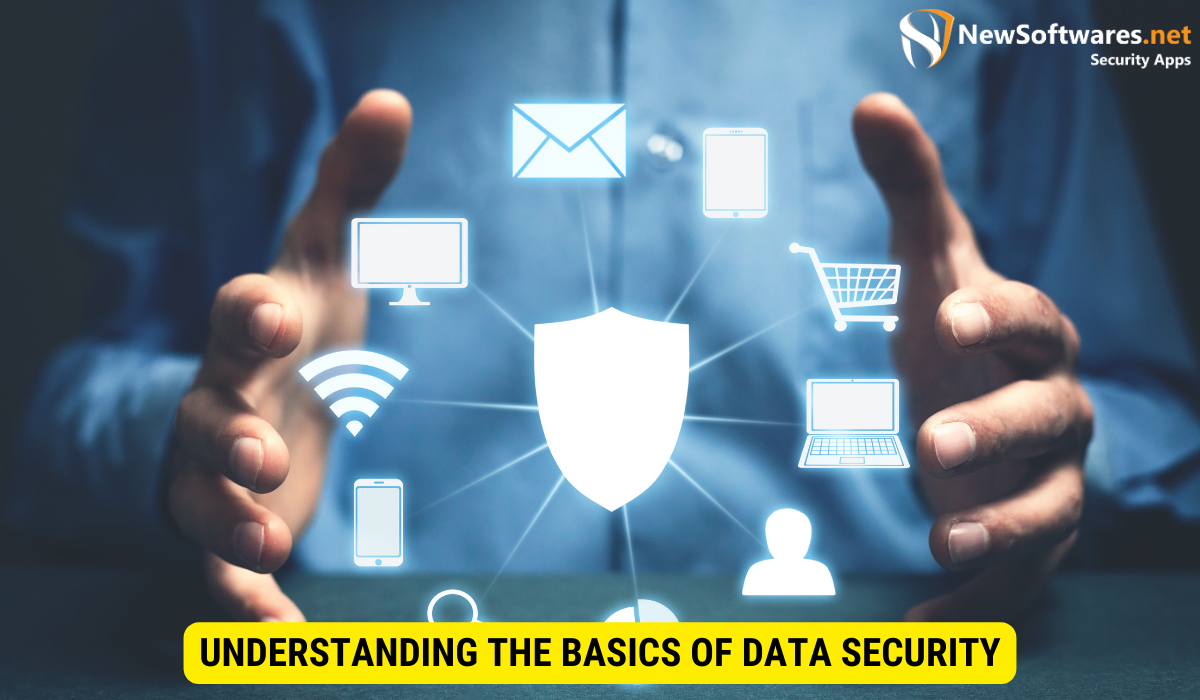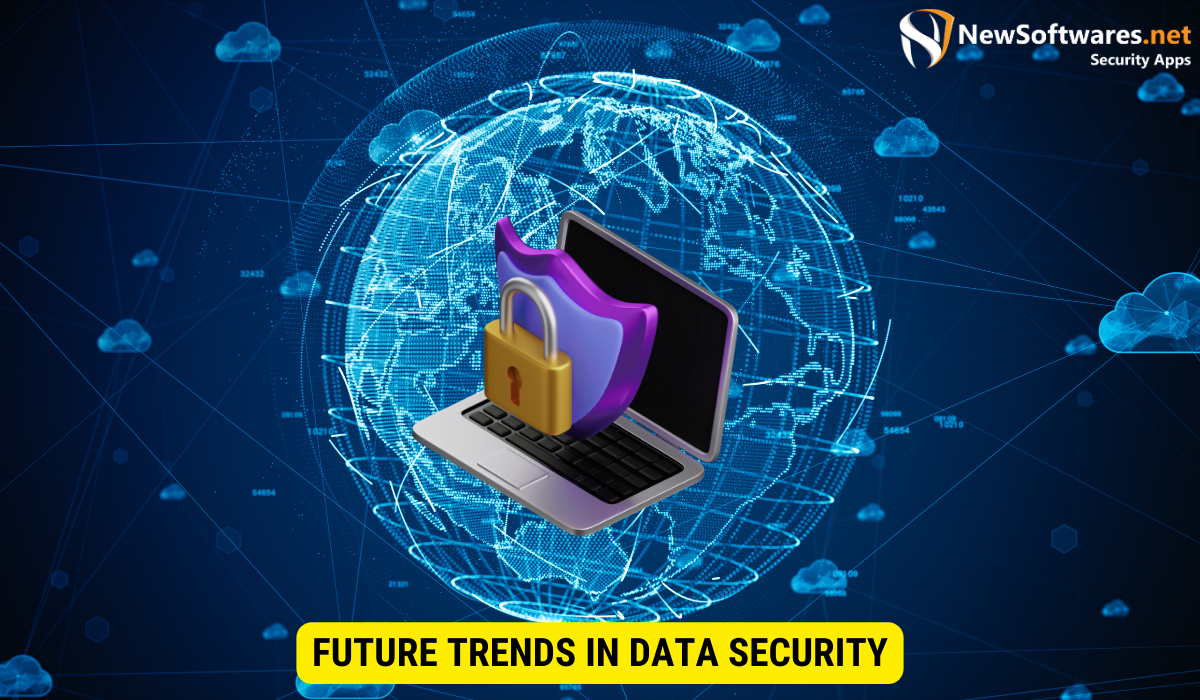Data security is essential in today’s digital age to protect sensitive information from unofficial access and use. It involves encrypting data and exploring advanced techniques, such as ‘another term,’ to ensure data confidentiality and integrity. Implementing best practices and staying updated with rising trends is crucial for preventing data breaches and safeguarding valuable data.
In today’s digital age, data security is of utmost importance. With the increasing reliance on technology and the constant threat of cyber attacks, individuals and organizations must understand the basics of data security and take necessary measures to protect sensitive information. Together, we will delve into the significance of data security and explore the concepts of unencrypted data and another term in the context of data security.
Understanding the Basics of Data Security

The significance of Data Security in Digital Age
Data security is vital in today’s interconnected world, where information is constantly transmitted and stored electronically. With the growing volume of sensitive data being shared, it is imperative to safeguard it from unauthorized access and use.
Data breaches can have severe consequences, including financial loss, reputational damage, and legal ramifications. Preventing unauthorized right of entry to sensitive information is crucial for businesses to uphold customer trust and protect their interests.
In addition to financial and reputational consequences, data breaches can also have a significant impact on individuals. Personal information, such as social security numbers, credit card details, and medical records, can be exposed, leading to identity theft and other forms of fraud. It is, therefore, essential for both businesses and individuals to prioritize data security.
Key Terms in Data Security: An Overview
Before diving into the specifics of unencrypted data and another term, it is important to familiarize ourselves with key terms in data security.
Encryption:
Encryption is the process of converting information into an unreadable form to anyone without authorization or a decryption key. Encrypted data requires the key to be deciphered, ensuring only official individuals can access the information.
Decryption:
Decryption converts encrypted data into its original, readable form. It requires the decryption key, which authorized individuals or systems possess.
Data Breach:
A data breach is an incident where unauthorized individuals gain access to sensitive and confidential information. This can occur due to various reasons, including weak security measures, human error, or targeted cyber attacks.
Unencrypted Data:
Unencrypted data refers to information that is not encoded or scrambled. It is easily readable and accessible to anyone who has access to it. Unencrypted data is highly vulnerable to unauthorized access and can be exploited by malicious individuals.
Data Encryption Algorithms:
Data encryption algorithms are mathematical formulas for encrypt and decrypt data. These algorithms determine the strength and complexity of the encryption process, ensuring that the data remains secure.
Secure Sockets Layer (SSL):
SSL is a cryptographic protocol that provides secure communication over the Internet. It establishes an encrypted link between a web server and a browser, ensuring that data transmitted between them remains confidential and protected from interception.
Firewalls are network security devices that monitor and control incoming and outgoing traffic. They act as a barrier between internal and external networks, filtering out potentially harmful traffic and protecting against unauthorized access.
Intrusion Detection Systems (IDS) are software or hardware systems that observe network traffic for doubtful activity or potential security breaches. They analyze network packets and compare them against known attack patterns, alerting system administrators when a potential threat is detected.
Security Policies and Procedures: Security policies and procedures are guidelines and protocols implemented by organizations to ensure data confidentiality, integrity, and availability. They define employees’ rules and practices to protect sensitive information and mitigate security risks.
By understanding these key conditions and concepts in data security, individuals and organizations can better protect their data and minimize the risk of unauthorized access or data breaches.
Diving Deep into Unencrypted Data
What is Unencrypted Data?
Unencrypted data, as the name suggests, refers to information that is not encrypted or transformed into a coded format. This means anyone accessing unencrypted data can read and interpret it without barriers.
Unencrypted data can exist in various forms, including emails, text files, databases, and physical documents. Unencrypted data is vulnerable to unauthorized access and potential misuse if not adequately protected.
The Risks Associated with Unencrypted Data
Unencrypted data poses significant risks, both for individuals and businesses:
- Data Theft: Unencrypted data can be easily stolen or intercepted by malicious actors. This can lead to identity theft, financial fraud, or unauthorized access to sensitive systems and accounts.
- Data Manipulation: Without encryption, unauthorized individuals can tamper and modify data. This compromises the integrity and reliability of the information, potentially leading to incorrect decisions and actions based on manipulated data.
- Regulatory Compliance: Many industries and jurisdictions have specific regulations regarding protecting sensitive data. Failure to encrypt data can result in non-compliance, leading to fines, legal issues, and reputational damage.
Organizations must recognize the risks associated with unencrypted data and implement strong encryption protocols to mitigate these risks.
Exploring ‘Another Term’ in Data Security
Defining ‘Another Term’
‘Another term’ refers to a concept or technology that has emerged as an alternative to traditional encryption methods. While encryption provides strong protection, ‘another term’ offers additional security and privacy.
Without disclosing the specific ‘another term,’ it is essential to understand that it enhances data security by introducing advanced techniques beyond encryption.
The Role and Impact of ‘Another Term’ in Data Security
Another term’ plays a crucial role in strengthening data security by addressing the limitations of traditional encryption.
This technology ensures that even if encrypted data is compromised, it remains indecipherable and undecryptable without the appropriate keys or authorization. By incorporating advanced algorithms and techniques, ‘another term’ ensures that data remains protected despite evolving cybersecurity threats.
The Significance of Unencrypted Data and ‘Another Term’
How Unencrypted Data and ‘Another Term’ Affect Data Security
The significance of unencrypted data and ‘another term’ lies in their impact on data security:
Unencrypted data highlights the vulnerabilities and risks associated with not safeguarding sensitive information. It emphasizes the need for encryption to protect data from unauthorized access and manipulation.
Another term’ provides an additional layer of security, surpassing the traditional security measures provided by encryption alone. It offers enhanced protection against sophisticated cyber threats, ensuring data confidentiality, integrity, and availability.
Mitigating Risks: Best Practices for Handling Unencrypted Data and ‘Another Term’
To mitigate the risks associated with unencrypted data and leverage the benefits of ‘another term,’ it is essential to follow best practices:
- Encrypt All Sensitive Data: Ensuring that all sensitive data is encrypted using robust encryption algorithms is crucial.
- Implement Multi-Factor Authentication: Adding an additional layer of authentication, such as biometrics or tokens, helps prevent unauthorized access to data.
- Regularly Update Security Measures: Keeping security measures up to date is vital to protect against emerging threats and vulnerabilities.
- Educate Employees: Training employees on data security best practices and potential risks can help minimize human errors that may lead to data breaches.
- Use ‘Another Term’: Exploring and implementing ‘another term’ can significantly enhance data security and resilience to cyber threats.
Future Trends in Data Security

Predicted Developments in Data Encryption
Data encryption is an evolving field with constant advancements. Some key developments expected in data encryption include:
- Quantum-Safe Encryption: With the increase of quantum computing, the need for encryption that can withstand quantum attacks is becoming crucial.
- Homomorphic Encryption: Homomorphic encryption enables computations on encrypted data without decrypting it, allowing for more secure data processing.
- Post-Quantum Cryptography: Post-quantum cryptography involves developing encryption algorithms that are opposed to to attacks by quantum computers.
The Evolving Landscape of Data Security
Data security landscape is continuously evolving to keep up with emerging threats and technologies. Some trends shaping the future of data security include:
- Artificial Intelligence in Security: AI-powered security solutions are emerging to detect and respond to sophisticated cyber-attacks.
- Privacy-Enhancing Technologies: Innovative technologies are being developed to enhance individual privacy while ensuring data security.
- Regulatory Frameworks: Governments and regulatory bodies are introducing more stringent regulations to protect sensitive data and hold those who fail to comply accountable.
Key Takeaways
- Data security is crucial in today’s digital age to guard sensitive information from unauthorized access and use.
- Unencrypted data refers to information not transformed into a coded format and poses significant risks if not adequately protected.
- Another term’ offers an additional layer of security beyond encryption to ensure data confidentiality and integrity.
- Mitigating risks associated with unencrypted data involves implementing encryption, multi-factor authentication, regular security updates, employee education, and exploring alternative security measures.
- The future of data security includes advancements in data encryption and the adoption of innovative technologies to counter evolving cyber threats.
FAQs
Why is data security important in the digital age?
Data security is important in the digital age to protect sensitive information from illegal access, breaches, and potential misuse. It ensures confidentiality, integrity, and data privacy, which are essential for individuals and organizations.
What are the risks associated with unencrypted data?
Unencrypted data poses risks such as data theft, manipulation, and non-compliance with data protection regulations. It leaves sensitive information vulnerable to unauthorized access and potential exploitation.
What is the role of encryption in data security?
Encryption plays a crucial role in data security by transforming information into a coded format that can only be deciphered with the appropriate keys or authorization. It stops unauthorized access to sensitive data and ensures its confidentiality.
What is the significance of ‘another term’ in data security?
Another term’ enhances data security by providing an additional layer of protection beyond encryption. It introduces advanced techniques beyond traditional encryption methods, ensuring data confidentiality, integrity, and availability even in the face of evolving cyber threats.
What are some future trends in data security?
Future trends in data security include developments in quantum-safe encryption, homomorphic encryption, and post-quantum cryptography. Additionally, the integration of artificial intelligence in security, privacy-enhancing technologies, and more stringent regulatory frameworks are shaping the future of data security.
Conclusion
Data security is a dangerous aspect of digital life, and understanding the basics is essential for individuals and organizations to protect sensitive information. Unencrypted data highlights the vulnerabilities and risks associated with inadequate protection, emphasizing the need for encryption. Additionally, exploring ‘another term’ provides an advanced layer of security to ensure data confidentiality and integrity. By following best practices and considering future trends in data security, individuals and organizations can stay ahead of developing cyber threats and protect their valuable data.
